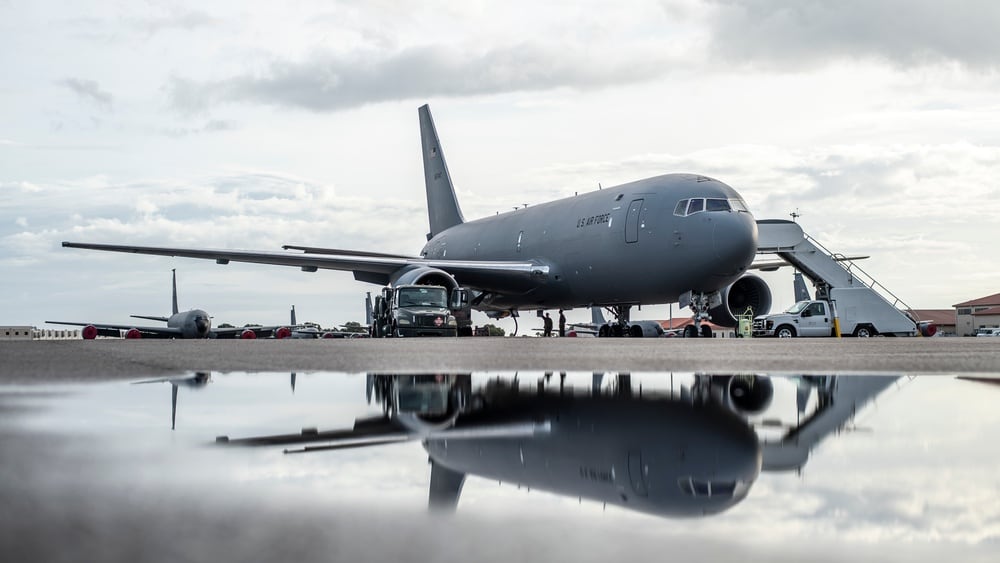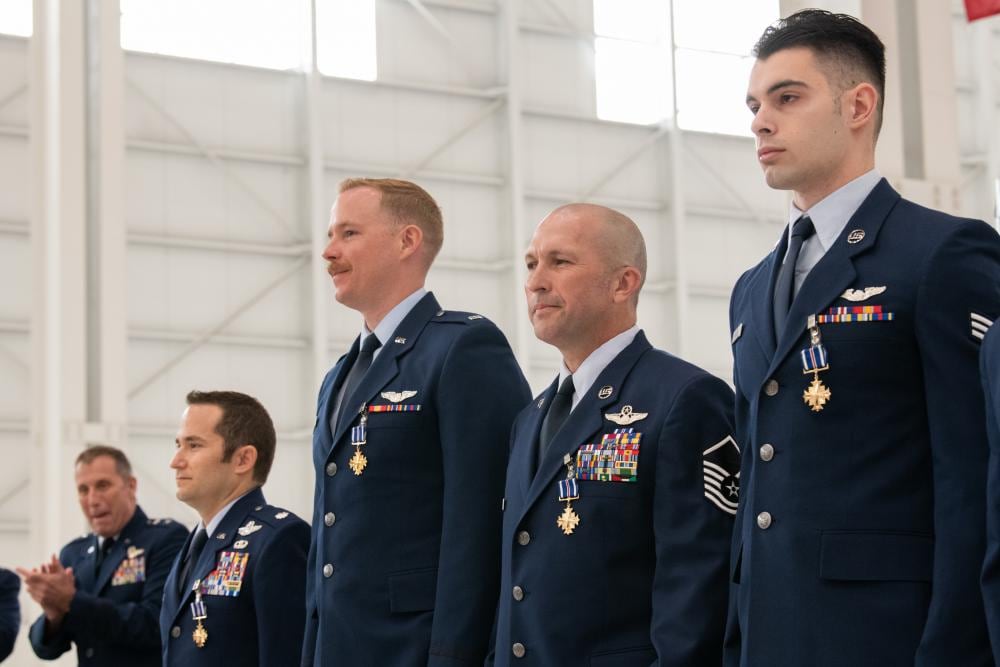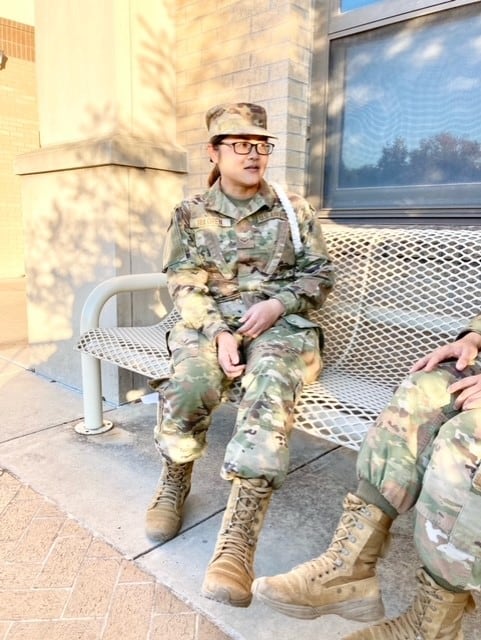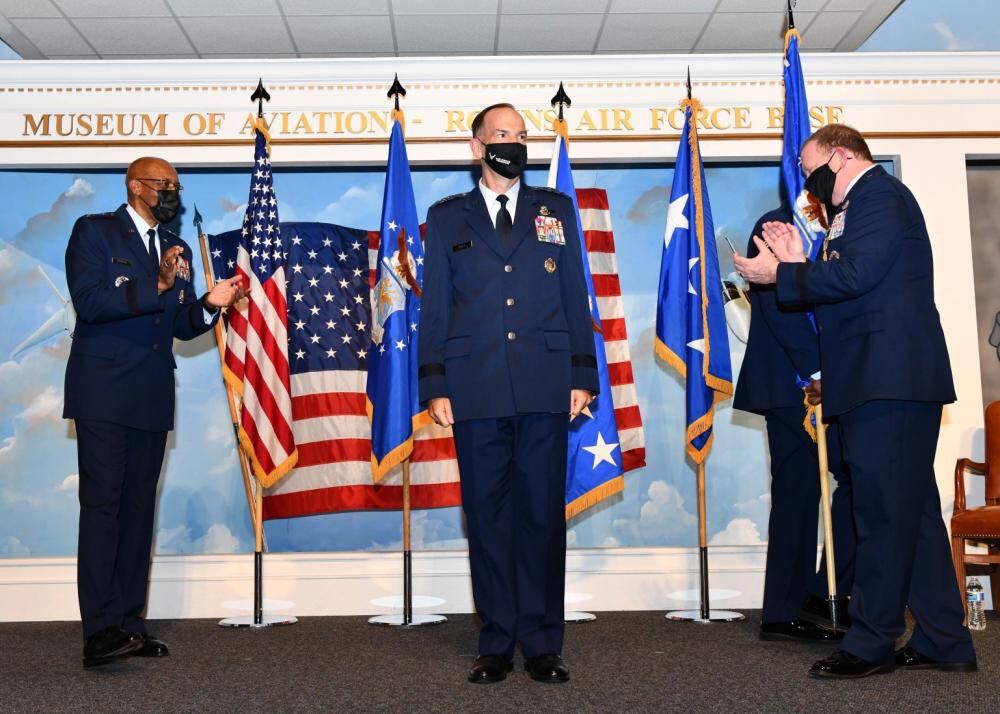Lt. Gen. John Healy took command of the Air Force Reserve on Wednesday, replacing its retiring boss Lt. Gen. Richard Scobee in a ceremony at Robins Air Force Base, Georgia.
Healy served as Scobee’s deputy for about a year before becoming head of the Reserve. He joined the Air Force in 1989 and pursued a career as a transport jet pilot and, later, in force planning.
“I’m inclined to a sense of urgency,” Healy said, quoting Air Force Chief of Staff Gen. Charles “CQ” Brown’s marquee initiative. “‘Accelerate change or lose’ was music to my ears.”
RELATED

The Air Force Reserve includes about 66,000 troops and 4,000 civilian employees across three numbered air forces, 33 flying wings and one space wing. Three-quarters of reservists work part-time in addition to their civilian lives.
Healy plans to continue updating the Reserve’s inventory while making sure airmen have the resources to do the “basic blocking and tackling” for their everyday jobs.
He also pledged to ramp up initiatives implemented over the past year designed to help airmen and their families at the wing level.
RELATED

Healy will lead the Air Force Reserve through a recruiting crunch, discussions of whether and how to create a separate Space Force counterpart, efforts to maintain and replace aging aircraft, and a hectic slate of missions to extinguish U.S. wildfires and monitor hurricanes.
In June, Air Force Reserve Command told Congress it may need to cut operations short at the end of fiscal 2022 because it doesn’t have the money for about 15% of its expected missions.
“These shortfalls could result in some AFRC units facing ‘stop-flying’ dates,” the Reserve said in written testimony. “Significant stoppages to flying hour programs will have pernicious effects on readiness by reducing pilot absorption, deferring maintenance, and delaying aircrew currency training.”
RELATED

In recent years, air reservists have bolstered operations across multiple crises at home and abroad.
“Three days into the job, Tyndall got wiped off the face of the map,” Scobee said of the Florida Air Force base that was directly hit by a Category 5 hurricane in 2018.
Nearly 650 Air Force reservists helped staff health care facilities overwhelmed by coronavirus patients earlier in the pandemic. And last summer, the Reserve prepared 80 aircrews and 36 aircraft in under 72 hours during Operation Allies Refuge, the frantic effort to evacuate at-risk Afghans and U.S. civilians from Kabul after the Taliban retook power. They supported nearly 40 evacuation missions and 13,000 Afghans starting new lives in the United States.
Service leaders praised the Reserve’s efforts in the face of uncertain funding and its growing list of challenging missions.
“You set up the New England Patriots on a high school team’s budget,” Healy told Scobee. “I have every confidence in the team we have set forth.”
Rachel Cohen is the editor of Air Force Times. She joined the publication as its senior reporter in March 2021. Her work has appeared in the Washington Post, the Frederick News-Post (Md.), Air and Space Forces Magazine, Inside Defense, Inside Health Policy and elsewhere.





